Our Aim
To provide you with an overview on New And existing technologies, hopefully helping you understand the changes in the technology. Together with the overviews we hope to bring topical issues to light from a series of independent reviewers saving you the time And hassle of fact finding over the web.
We will over time provide you with quality content which you can browse and subscribe to at your leisure.
TekSpek 's

AMD Radeon RX6000 Series
Date issued:
Radeon goes big
2020 has been a trying year in more ways than one, yet gaming enthusiasts can take solace in the relentless release schedule of cutting-edge hardware in recent months. It all started with NVIDIA setting lofty new standards with hard-hitting Ampere GPUs, Microsoft and Sony have since introduced a wave of eagerly anticipated next-generation games consoles, and if all that wasn't enough, AMD is today chiming in with the Radeon RX 6000 Series.
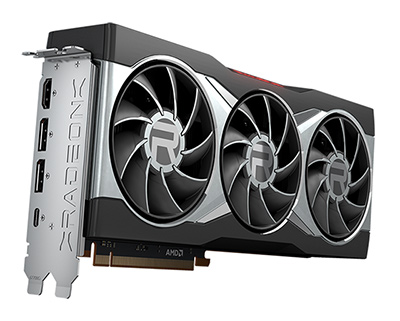
Team Red faces the daunting task of facing up to NVIDIA's GeForce RTX 30 Series, yet AMD has proven adept at taking on the established players, and having bested Intel on desktop CPUs, it now has sights on the lucrative discrete GPU market.
Getting the party started, Radeon RX 6800 XT and Radeon RX 6800 arrive at retail first, with the ambition of rivalling GeForce RTX 3080 and GeForce RTX 3070, respectively. No small task, and the full might of next-gen Radeon doesn't arrive until a later date in the form of Radeon RX 6900 XT.
Introducing the Radeon RX 6000 Series |
|||||
|---|---|---|---|---|---|
| Radeon RX 6900 XT | Radeon RX 6800 XT | Radeon RX 6800 | Radeon RX 5700 XT | Radeon RX 5700 | |
| Launch date | December 2020 | November 2020 | November 2020 | July 2019 | July 2019 |
| Architecture | RDNA 2 | RDNA 2 | RDNA 2 | RDNA | RDNA |
| Process (nm) | 7 | 7 | 7 | 7 | 7 |
| Transistors (bn) | 26.8 | 26.8 | 26.8 | 10.3 | 10.3 |
| Die Size (mm²) | 519 | 519 | 519 | 251 | 251 |
| Full Implementation of Die | Yes | No | No | Yes | No |
| Hardware Ray Tracing | Yes | Yes | Yes | No | No |
| Infinity Cache | Yes | Yes | Yes | No | No |
| Compute Units | 80 | 72 | 60 | 40 | 36 |
| Processors | 5,120 | 4,608 | 3,840 | 2,560 | 2,304 |
| Texture Units | 320 | 288 | 240 | 160 | 144 |
| ROPs | 128 | 128 | 96 | 64 | 64 |
| Boost Clock (MHz) | 2,250 | 2,250 | 2,105 | 1,905 | 1,725 |
| Game Clock (MHz) | 2,015 | 2,015 | 1,815 | 1,755 | 1,625 |
| Peak GFLOPS (SP) | 23,040 | 20,736 | 16,166 | 9,750 | 7,950 |
| Memory Type | GDDR6 | GDDR6 | GDDR6 | GDDR6 | GDDR6 |
| Memory Size (GB) | 16 | 16 | 16 | 8 | 8 |
| Memory Clock (MHz) | 16,000 | 16,000 | 16,000 | 14,000 | 14,000 |
| Memory Bus (bits) | 256 | 256 | 256 | 256 | 256 |
| Max Bandwidth (GB/s) | 512 | 512 | 512 | 448 | 448 |
| PCIe Support | Gen 4 | Gen 4 | Gen 4 | Gen 4 | Gen 4 |
| Power Connectors | 8+8 | 8+8 | 8+8 | 6+8 | 6+8 |
| TDP (watts) | 300 | 300 | 250 | 225 | 180 |
| GFLOPS per watt | 76.8 | 69.1 | 64.66 | 43.3 | 44.2 |
| Launch MSRP | $999 | $649 | $579 | $399 | $349 |
Perusing the specification table reveals some fascinating insights. AMD's latest architecture, dubbed RDNA 2, is built on the same 7nm fabrication process as its predecessor but goes with the old adage that bigger is better. You might have heard RDNA 2 referred to as Big Navi in the year leading up to launch, and it's clear to see why. When comparing the full implementation of each generation, die size has more than doubled, ballooning from 251mm² to a whopping 519mm².
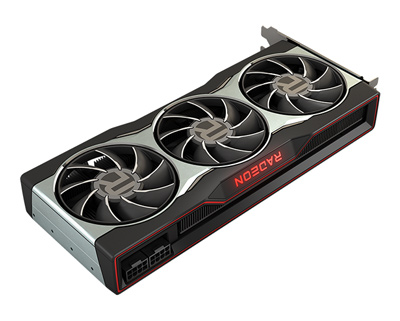
Such expansion paves the way for a doubling of CUs, from 40 to 80, which in turn sees a 2x increase in processors, texture units and ROPs. More of everything, really, and that extends to the GDDR6 frame buffer, which has grown from 8GB to 16GB on every SKU. A 100 per cent increase in most areas is welcome news for enthusiasts, while refinements to manufacturing also allow for higher boost clocks - 2.3GHz vs. 1.9GHz.
Good news on all fronts, yet with such voluminous credentials, how has AMD managed to keep those extra CUs fed via a relatively narrow 256-bit memory bus, all while keeping RDNA 2's TDP to relatively comfortable levels? A 33 per cent increase over the previous generation - 300W vs. 225W - suggests there's additional silicon magic under the hood.
RDNA 2 Enhancements
There are evolutionary improvements to the architecture - RDNA 2 Compute Units offer 1.3x higher throughput than RDNA at the same power - but these are bolstered by revolutionary changes to memory. Borrowing from its CPU expertise, AMD has moved to scale down the reliance on large and power-hungry dedicated frame buffers or expensive technologies such as HBM2 by infusing Radeon RX 6000 Series with a new form of on-chip memory known as Infinity Cache.
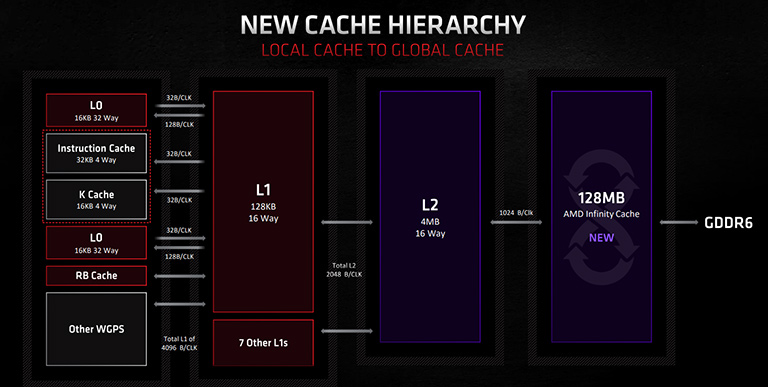
Weighing in at 128MB and connected via Infinity Fabric, the dedicated pool of last-level Infinity Cache plays a key role on the large 519mm² die and is capable of delivering 64 bytes of data, per clock, across 16 channels, at 1.94GHz. In other words, the on-chip cache provides bandwidth of around 2TB/s - 4x that of a 256-bit interface to external GDDR6 - while reducing both power consumption and latency.
Infinity Cache allows AMD to take a more modest approach to the RDNA 2 back end, where a 256-bit interface is deemed sufficient for main memory, and there's another pivotal enhancement to each CU in the form of a dedicated Ray Accelerator (RA).
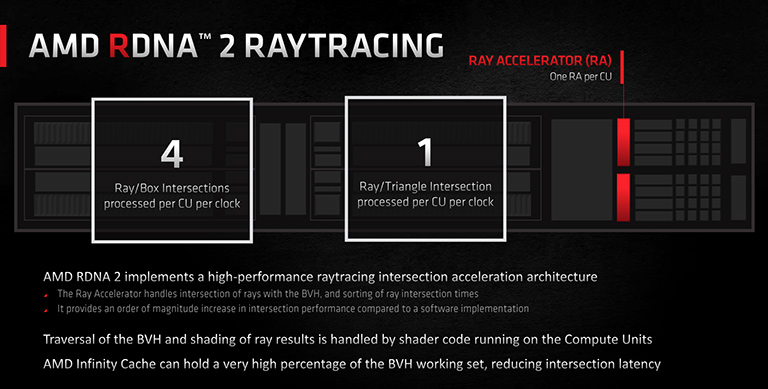
Bringing hardware-accelerated ray tracing to Radeon GPUs for the first time, up to 80 RAs are at hand to lessen the load of this computationally demanding method of portraying far more accurate in-game lighting. The same RDNA 2 architecture is to thank for ray tracing support on PlayStation 5 and Xbox Series S/X, and with full compatibility with DirectX 12 Ultimate, AMD is able to call upon mesh shading, sampler feedback and variable-rate shading to help drive performance.
There's clearly more to RDNA 2 than first meets the eye, and AMD fans hoping to unite the firm's best CPUs and GPUs have added incentive in the form of Smart Access Memory. Available when an RX 6000 Series graphics card is paired to a Ryzen 5000 Series processor, Smart Access Memory provides the CPU with full admittance to the GPU's 16GB of video memory over a fast PCIe interface, leading in some scenarios to in-game performance boosts of up to 15 per cent. The caveat, as always, is that such advancements will require developer support, though with RDNA 2 at the heart of major game consoles, there's good reason to be optimistic.
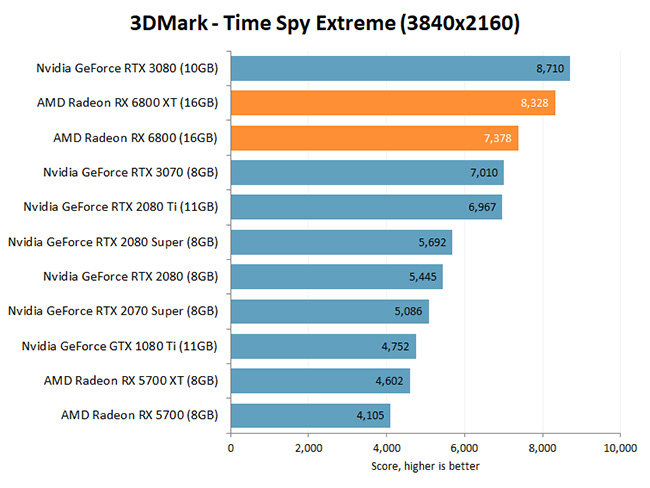
Scaling the Charts
While the previous-generation Radeon RX 5000 Series typically propped up the bottom of most high-end charts, the new-and-improved Radeon RX 6800 and 6800 XT are evidently a different breed of GPU. Benchmarks from leading review sites reveal a performance leap of 80 per cent between generations, putting the latest Radeons right alongside rival GeForce solutions.
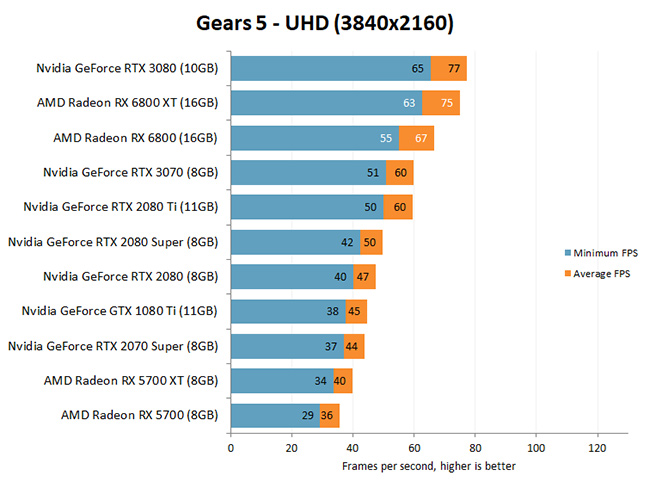
Performance can and will vary from one title to the next, yet Gears 5 tends to be a good metric and puts the Radeon RX 6800 XT within a stone's throw of the impressive GeForce RTX 3080. There's even better news for the Radeon RX 6800, which manages to nip ahead of the similarly-priced GeForce RTX 3070 at a demanding 4K UHD resolution.
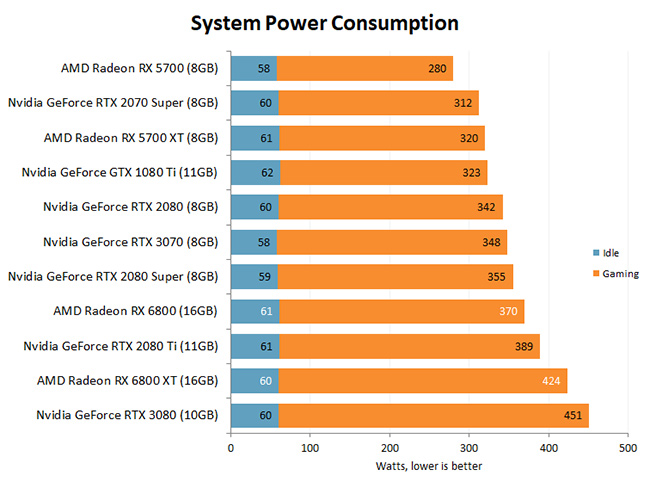
Delivering large gains in performance while keeping power consumption down to reasonable levels is the real trick, and AMD's attention to Infinity Cache has helped keep pace with the current competition.
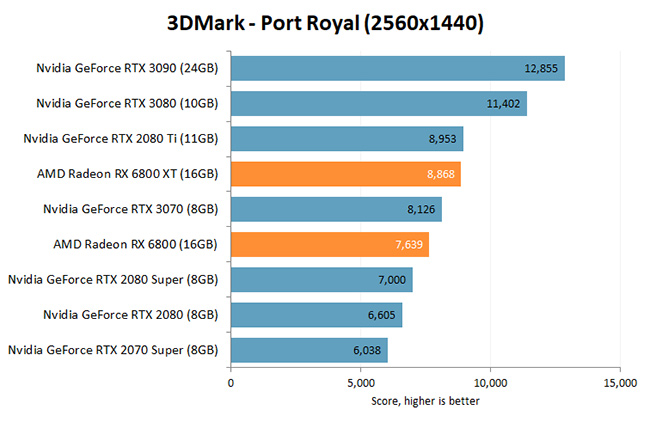
It isn't all good news, mind. Though AMD has ticked more boxes than seemed possible with RDNA 2, there is no escaping the fact that the first generation of ray tracing on Radeon hardware isn't as potent as what's on offer from Nvidia. Whereas RTX 30 Series has reached new heights in terms of ray tracing ability, RDNA 2 can only be deemed on par with older GeForce hardware in this regard.
Summary
After a long hiatus, AMD has finally returned to the high-end PC graphics arena with Radeon RX 6000 Series GPUs that are competitive in more ways than one. Championing a forward-looking RDNA 2 architecture, the firm's latest and greatest are bolstered with innovative features such as Infinity Cache and Smart Access Memory, and to our pleasant surprise, are able to go toe-to-toe with the equivalent GeForce RTX in terms of pure rasterisation performance.
There's still work to be done on the ray tracing front, where NVIDIA reigns supreme, yet with RDNA 2 on its way to becoming a major standard on both PC and console, it is surely only a matter of time until developers begin to leverage the full might of AMD's best Radeons to date. It is a great time to be a gamer on any platform.
As always, a wide range of AMD Radeon RX 6000 Series graphics cards will be available to purchase right here at Scan Computers.